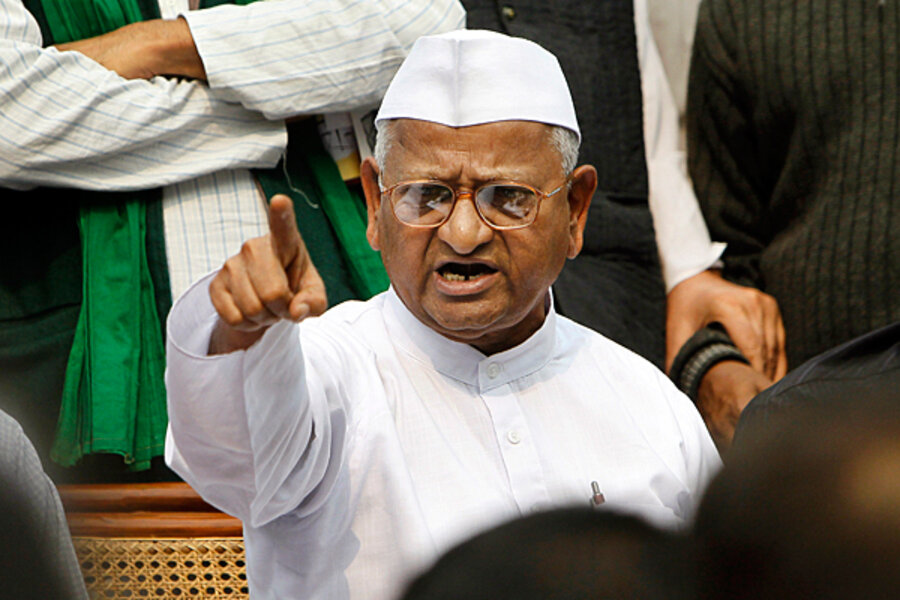Anticorruption activist Anna Hazare put India’s widespread corruption in the spotlight this summer with his high-profile fast. That prompted promises of government reform. The country has a long way to go – India tumbled from an already low 3.3 in 2010 to 3.1 in 2011, putting it at No. 95 on the index.
The index relies largely on perception of corruption among the country’s public, so this year’s drop may have much to do with Indians becoming more aware of corruption because of Mr. Hazare’s fast.
As the Monitor reports, corruption has been on the rise for several years now, and it comes with the territory of rapid economic growth.
"There's not an economy in the world where you have had rapid economic growth and transformation of an economy without a rise – at least for a while – in corruption and inequality," Vivek Dehejia, an economics professor at Carleton University in Ottawa, told the Monitor at the time.
"You can say the growth caused the corruption, and in some sense the corruption leads to its own correction. And if you don't do that, you can get stuck and wind up in a middle-income trap," he added.





